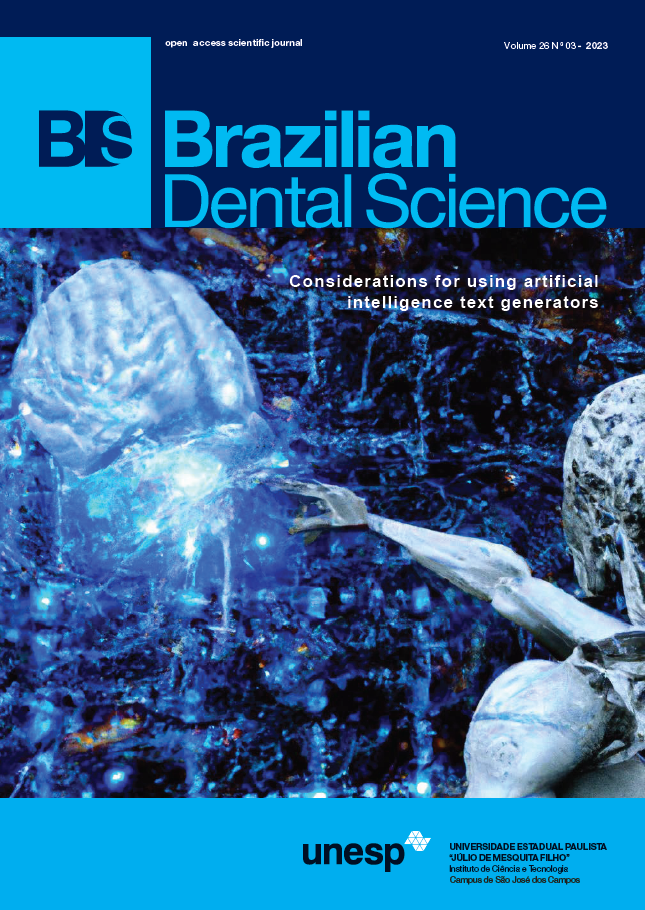Effect of laboratory and chairside polishing methods on the surface topography of occlusal splint materials manufactured using conventional, subtractive and additive digital technologies
DOI:
https://doi.org/10.4322/bds.2023.e3873Abstract
Objective: This study evaluated the polishing properties of the occlusal splint materials obtained using subtractive and additive manufacturing methods with the laboratory-type polishing (LP) and chairside-type polishing (CP) procedures. Material and Methods: Specimens (N=180, n=60 each group) were manufactured using one of the following methods: subtractive manufacturing method (SMM) (M-PM Disc, Merz Dental GmbH), additive manufacturing method (AMM) (Freeprint Splint 2.0, DETAX GmbH & Co. KG), and the conventional manufacturing method (CMM) (Promolux HC, Merz Dental GmbH). Following LP and CP procedures, surface roughness of the specimens was measured using a digital surface profilometer. One representative specimen was selected from each group, and a scanning electron microscope (SEM) image was made. Results: Both the manufacturing method and the polishing procedures significantly affected the results (P<0.01). Interaction terms were also significant (P<0.001). Conclusion: With both polishing methods, surface roughness of the AMM group was the highest and the CMM group the least. Although the CP procedure was more effective than LP with both methods, surface roughness was below the 0.2 micro m threshold after both polishing procedures tested.
KEYWORDS
CAD-CAM, dental materials, occlusal splints, PMMA, surface properties.
Downloads
Published
How to Cite
Issue
Section
License
Brazilian Dental Science uses the Creative Commons (CC-BY 4.0) license, thus preserving the integrity of articles in an open access environment. The journal allows the author to retain publishing rights without restrictions.
=================




























